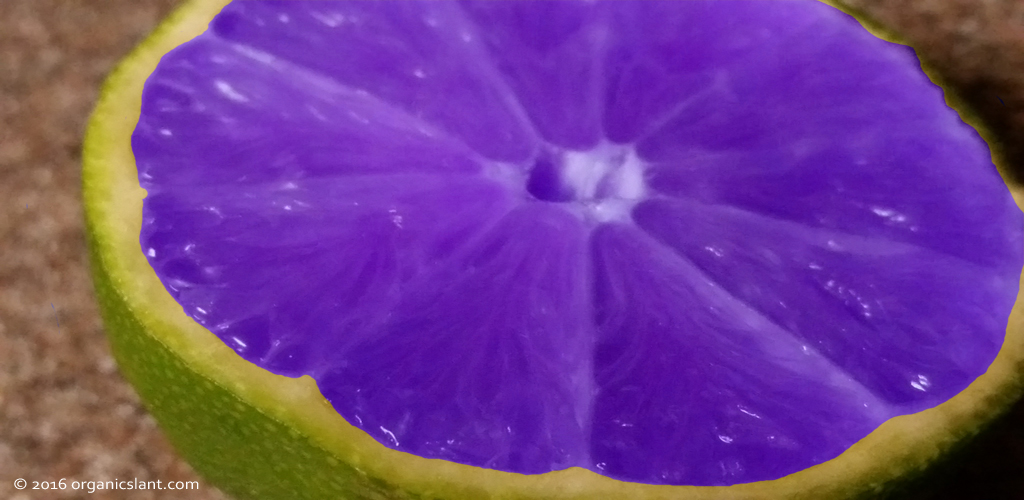Scientists are developing genetically engineered limes containing anthocyanin, which are beneficial bioflavonoids that have numerous roles in human well-being, including treating obesity and diabetes.
University of Florida horticulture scientist Manjul Dutt is hoping to turn your next margarita on its head by making it a lovely lavender instead of passé pale green.
Dutt and Jude Grosser from the UF Citrus Research and Education Center are developing genetically engineered limes containing some similar genetic factors that are expressed in grape skin and blood orange pulp. These modified Mexican limes have a protein that induces anthocyanin biosynthesis, the process that creates the “red” in red wine, and causes the limes to develop a range of colors in the pulp from dark purple to fuchsia.
“Anthocyanins are beneficial bioflavonoids that have numerous roles in human well-being,” Dutt explained. “Numerous pharmacological studies have implicated their intake to the prevention of a number of human health issues, such as obesity and diabetes.”
Anthocyanins also naturally occur in a variety of oranges called blood oranges, which has a red to maroon colored flesh and, some say, a better taste than Florida’s “blond” oranges. But blood oranges need cold temperatures to develop their trademark vibrant color. They grow and color well in the cooler climates of Spain and Italy, but do not exhibit the characteristic blood red color when grown in the subtropical climate of the Florida citrus belt.
These new limes were developed using genes isolated from the red grape “Ruby Seedless” and the Blood Orange “Moro.” Research on the utilization of these genes was conducted initially to develop a more consumer-friendly, alternative, plant-derived, system. They are the first step toward Florida farmers producing blood oranges and, possibly, a new grapefruit cultivar.
In addition to changing the color of the fruit, the introduction of anthocyanins also change the color of leaves stems and flowers, and could lead to the creation of ornamental citrus plants.
“Novel fruit, leaf, and flower colors could be produced by regulating anthocyanin biosynthesis,” Dutt said. “Flower color ranged from light pink to fuchsia.”
Dutt and Grosser’s study is being published in the January edition of the Journal of the American Society for Horticultural Science.
#UF_IFAS hopes to turn your next margarita a lovely lavender instead of passé pale green! https://t.co/5m4T6v9pXd pic.twitter.com/L48eqBeHnd
— UF IFAS Solutions (@UF_IFAS) January 7, 2016

 Animal vs. Plant Protein: These Protein Sources Are Not Nutritionally Equivalent
Animal vs. Plant Protein: These Protein Sources Are Not Nutritionally Equivalent Billions of nanoplastics released when microwaving baby food containers
Billions of nanoplastics released when microwaving baby food containers Cancer biologists find DNA-damaging toxins in common plant-based foods
Cancer biologists find DNA-damaging toxins in common plant-based foods Soaking Potatoes In Water Before Frying Reduces Acrylamide
Soaking Potatoes In Water Before Frying Reduces Acrylamide